I apologize, this is going to be a long read, I wanted to condense it but I think a lot of it is necessary to the story.
This Soldbuch belonged to Wilhelm Sanner from Holler, Germany - about halfway between Cologne and Frankfurt in the Unterwesterwalde region. Born Jan. 1 1920, he was a 20 year old laborer when he joined the Wehrmacht on Oct. 17, 1940. His induction unit was the 2nd Company of the Replacement Artillery Regiment 179 (Ers. Art. Rgt. 179), but he was immediately transferred to the light Artillery Training and Replacement Battalion 34 (le. Art. Ersatz u. Ausbildung Rgt. 34) for training, part of the 34th Infantry Regiment, located in Trier (very close to his hometown). He would remain with this unit until 1944, but had no idea what lay before him. After training, his field assignment was with Art Rgt 86, part of the 112 Infanterie Regiment. The 112 Regiment was brought up with plans to use them in the upcoming Russian offensive - they were trained on captured French weapons, and by April 1 were fully trained and ready for operations. The unit was part of operation Barbarossa, the invasion of Russia.
At the start of Barbarossa (June 22) Sanner's unit was kept in reserves, but by July 4 the unit had been given marching orders, 3 weeks of unstopping marching without rest to the river Dnieper in the Ukraine. The end of July saw the unit begin contact with Russian troops at Nikonowitsichi. During the next month, the unit was continually harassed in rear areas by Russian troops. During August, the division defends a 40km wide section of the front lines between Lozov and Gomel-Shlobin rail line. A breakout attempt by Russian divisions suffers severe losses inflicted by the 112th. After the successful completion of this action, the unit marches 200km in 8 days following the 167 ID with no enemy contact, and by the end of August was deeper into Russian territory, fighting small actions along the way.
From town to town, fighting every inch of the way, even thought the unit is still listed as reserves in the OKH roster. Noted battles in Peklino, Mechanowka, Iwet, Shizdra-Lyudiowo, all battles never heard about. From October 9-16 the 112th captured 26000 prisoners alone, in addition to 211 guns and numerous captured vehicles. With little rest, the division advances northeast in the worst weather conditions. During October, all of the divisions motorized vehicles get bogged down in mud and are left behind, to be collected later after recovery (not returned until December!). The entire unit was on foot, marching and fighting. Regardless of cold spells of up to -20 C, the runway at Plawsk-Tula was reached Nov.6. At this point the division is hammered with Soviet tank attacks. It's at this time Sanner is awarded the Iron Cross II class, unknown which action it is for.
I will for halt now with the detailed unit actions, of which many reflect the same above. From November 1941 - November 1943 the 112th was in the worst of the worst fighting in Russia. Village to Village, attacks, counter attacks, cold weather, then mud. The worst humanity can throw at a human being as war goes. The 112th was in the thick of things. By mid 1942 the division was downgraded from Division to Kampfgruppe, as the replacements couldn't refill the ranks fast enough to keep the unit at strength, and did not receive enough vehicles and replacements to remain as such. During this heavy fighting (July 1942) Sanner receives the "Sturmabzeichen", or what we call "General Assault Badge". The next month he receives his Russian Front medal as well. In July 1943 he is awarded the black wound badge, interestingly he wasn't hospitalized so most likely wounds treated at the front.
Fierce fighting at the Kanew bridgehead was the last action by the 112th, in October 1943. Daily intense artillery fire, scouting troops, assault troops, air attacks, and strong tank attacks ensued. Finally, by the end of October the front at the Dnieper quieted down enough to regroup. In November 1943 the 112th Infanterie-Division was so under strength that it ceased to exist, dissolved by the OKH. Heavy fighting and losses of men and material were such that the unit wasn't even Kampfgruppe strength. At that point, units from the 112th were grouped with other decimated units (112. Inf. Div, 255 Inf. Div, and 332 Inf. Div) to form "Korps-Abteilung B", an ad hoc fighting unit commanded by the remnants of the 112th command staff. The Art. Rgt. 86 of which Sanner belongs remains, but certainly at lower strength, combined with the Art.Rgt from 332 Inf.Div. - I feel it is at this time his Batterie affiliation from 8./Art.Rgt.86 is scratched through with pen to reflect 2./Art.Rgt.86 (Page 4 of the Soldbuch).
Not much I can find that is written about Korps Abteilung B between formation and Cherkassy, seemingly used as defense and front line duty. They were under the command of General Lieb in the XXXXII Armeekorps. In January 1944, the unit was at Korsun, tasked with defending the Northern part of the front line. I won't recount the entire battle, but the Korps-Abteilung B were trapped in the Cherkassy pocket with the SS Wiking Division. The battle is well researched and books abound, suffice it to say the battle was a shite show if you haven't read about it. Korps-Abteilung B played a major role in the breakout, including the Art.Rgt.86, whose commander received the Knights Cross for his actions (Neufellner, Karl 06.04.1944 Oberst Kdr Art.Rgt 86). The Germans lost all of the equipment and many men in the breakout - Sanner managed to escape alive, albeit with either frostbite or exposure - after evacuation from the pocket, he spent 2 weeks in a hospital in Poland for exposure (wound code -33-, P.12 in the Soldbuch) and then another 3 months or so in Germany. At this point in time he receives the Führergeschenk (April 4, 1944), a gift from the Führer for front line soldiers on leave. On June 6 is he release from the hospital with the notation "k.v. - kriegsverwendungsfähig", or fit for duty. Also, troops trapped in the pocket were authorized home leave, which Sanner received approval for on JUNE 5, 1944, 1 day before the allied invasion of Europe! Talk about luck - it shows he was allowed 2 consecutive 14 day leaves to home, so a full month, even as Allied troops were embarking on the operation to free Europe.
You may think his journey ends there- it does not. After returning to his unit from leave, he is retrained (or received additional training) with his old training unit, le.Art.Ers.u.Ausb.34, in preparation for redeployment. He receives a replacement Erkennungsmarke in July, and a security check on his soldbuch (Sept.1 1944 - P.14 of the Soldbuch) from his old training unit, and is transferred to his new unit, the schwere Artillerie-Abteilung 456. This unit had recently broken out of the Falaise pocket losing nearly all of it's equipment (he barely missed another encirclement there) and are regrouping for the defense of Germany.
Tracking down where the schwere Artillerie-Abteilung 456 was is an interesting journey, not much information about them. A few reports state they were attached to the 7th German Army, (the Bulge), then attached to the 1st Army in 1945. The actual assignment seems to have been " Army High Command West "zbV", ie "for special use" - A personal report from a man in the 4./ schwere Artillerie-Abteilung 456 tells a lot of the story. After evacuation from Falaise, the unit was reequipped with 8.8cm towed guns in December (Obgefr. Sanners promotion to Unteroffizier occurs in Dec. 1944, perhaps he was given command of a gun?), which they used in a direct fire capability - read that anti-tank. They basically fought a defensive withdrawal from town to town, staying ahead of (in most cases) American troops. It's most likely a similar story for other batteries, although not exact. It is an interesting short read (shorter than my diatribe here). If you feel inclined, I am posting the translated version link here:
https://translate.google.com/transl.../regional_weltkrieg_rueckzug.html&prev=search
What I found interesting is in his unit gear issue, everything was turned in sometime in late March and he was reissued basic gear March 25, 1945 - uniform, socks, belt, breadbag. It may be that the unit was captured or was lightening their load for faster travel? No entries after March 25 1945. He was issued a P.38 in January 1945, so some GI could very well have captured that pistol and brought it home. Maybe one day I'll find it....one could hope. Other notables not mentioned - on P.8, special clothing issue shows a Feldbluse and some type of Jacket (can't quite make it out). I suspect this is winter clothing which the soldiers didn't get in 41 but wish they had. Issue date is August though, need to research that more as well.
A simple laborer thrown into the cauldron of Russia and the fighting in the West. How he survived the war is anyone's guess. If he did.
This Soldbuch belonged to Wilhelm Sanner from Holler, Germany - about halfway between Cologne and Frankfurt in the Unterwesterwalde region. Born Jan. 1 1920, he was a 20 year old laborer when he joined the Wehrmacht on Oct. 17, 1940. His induction unit was the 2nd Company of the Replacement Artillery Regiment 179 (Ers. Art. Rgt. 179), but he was immediately transferred to the light Artillery Training and Replacement Battalion 34 (le. Art. Ersatz u. Ausbildung Rgt. 34) for training, part of the 34th Infantry Regiment, located in Trier (very close to his hometown). He would remain with this unit until 1944, but had no idea what lay before him. After training, his field assignment was with Art Rgt 86, part of the 112 Infanterie Regiment. The 112 Regiment was brought up with plans to use them in the upcoming Russian offensive - they were trained on captured French weapons, and by April 1 were fully trained and ready for operations. The unit was part of operation Barbarossa, the invasion of Russia.
At the start of Barbarossa (June 22) Sanner's unit was kept in reserves, but by July 4 the unit had been given marching orders, 3 weeks of unstopping marching without rest to the river Dnieper in the Ukraine. The end of July saw the unit begin contact with Russian troops at Nikonowitsichi. During the next month, the unit was continually harassed in rear areas by Russian troops. During August, the division defends a 40km wide section of the front lines between Lozov and Gomel-Shlobin rail line. A breakout attempt by Russian divisions suffers severe losses inflicted by the 112th. After the successful completion of this action, the unit marches 200km in 8 days following the 167 ID with no enemy contact, and by the end of August was deeper into Russian territory, fighting small actions along the way.
From town to town, fighting every inch of the way, even thought the unit is still listed as reserves in the OKH roster. Noted battles in Peklino, Mechanowka, Iwet, Shizdra-Lyudiowo, all battles never heard about. From October 9-16 the 112th captured 26000 prisoners alone, in addition to 211 guns and numerous captured vehicles. With little rest, the division advances northeast in the worst weather conditions. During October, all of the divisions motorized vehicles get bogged down in mud and are left behind, to be collected later after recovery (not returned until December!). The entire unit was on foot, marching and fighting. Regardless of cold spells of up to -20 C, the runway at Plawsk-Tula was reached Nov.6. At this point the division is hammered with Soviet tank attacks. It's at this time Sanner is awarded the Iron Cross II class, unknown which action it is for.
I will for halt now with the detailed unit actions, of which many reflect the same above. From November 1941 - November 1943 the 112th was in the worst of the worst fighting in Russia. Village to Village, attacks, counter attacks, cold weather, then mud. The worst humanity can throw at a human being as war goes. The 112th was in the thick of things. By mid 1942 the division was downgraded from Division to Kampfgruppe, as the replacements couldn't refill the ranks fast enough to keep the unit at strength, and did not receive enough vehicles and replacements to remain as such. During this heavy fighting (July 1942) Sanner receives the "Sturmabzeichen", or what we call "General Assault Badge". The next month he receives his Russian Front medal as well. In July 1943 he is awarded the black wound badge, interestingly he wasn't hospitalized so most likely wounds treated at the front.
Fierce fighting at the Kanew bridgehead was the last action by the 112th, in October 1943. Daily intense artillery fire, scouting troops, assault troops, air attacks, and strong tank attacks ensued. Finally, by the end of October the front at the Dnieper quieted down enough to regroup. In November 1943 the 112th Infanterie-Division was so under strength that it ceased to exist, dissolved by the OKH. Heavy fighting and losses of men and material were such that the unit wasn't even Kampfgruppe strength. At that point, units from the 112th were grouped with other decimated units (112. Inf. Div, 255 Inf. Div, and 332 Inf. Div) to form "Korps-Abteilung B", an ad hoc fighting unit commanded by the remnants of the 112th command staff. The Art. Rgt. 86 of which Sanner belongs remains, but certainly at lower strength, combined with the Art.Rgt from 332 Inf.Div. - I feel it is at this time his Batterie affiliation from 8./Art.Rgt.86 is scratched through with pen to reflect 2./Art.Rgt.86 (Page 4 of the Soldbuch).
Not much I can find that is written about Korps Abteilung B between formation and Cherkassy, seemingly used as defense and front line duty. They were under the command of General Lieb in the XXXXII Armeekorps. In January 1944, the unit was at Korsun, tasked with defending the Northern part of the front line. I won't recount the entire battle, but the Korps-Abteilung B were trapped in the Cherkassy pocket with the SS Wiking Division. The battle is well researched and books abound, suffice it to say the battle was a shite show if you haven't read about it. Korps-Abteilung B played a major role in the breakout, including the Art.Rgt.86, whose commander received the Knights Cross for his actions (Neufellner, Karl 06.04.1944 Oberst Kdr Art.Rgt 86). The Germans lost all of the equipment and many men in the breakout - Sanner managed to escape alive, albeit with either frostbite or exposure - after evacuation from the pocket, he spent 2 weeks in a hospital in Poland for exposure (wound code -33-, P.12 in the Soldbuch) and then another 3 months or so in Germany. At this point in time he receives the Führergeschenk (April 4, 1944), a gift from the Führer for front line soldiers on leave. On June 6 is he release from the hospital with the notation "k.v. - kriegsverwendungsfähig", or fit for duty. Also, troops trapped in the pocket were authorized home leave, which Sanner received approval for on JUNE 5, 1944, 1 day before the allied invasion of Europe! Talk about luck - it shows he was allowed 2 consecutive 14 day leaves to home, so a full month, even as Allied troops were embarking on the operation to free Europe.
You may think his journey ends there- it does not. After returning to his unit from leave, he is retrained (or received additional training) with his old training unit, le.Art.Ers.u.Ausb.34, in preparation for redeployment. He receives a replacement Erkennungsmarke in July, and a security check on his soldbuch (Sept.1 1944 - P.14 of the Soldbuch) from his old training unit, and is transferred to his new unit, the schwere Artillerie-Abteilung 456. This unit had recently broken out of the Falaise pocket losing nearly all of it's equipment (he barely missed another encirclement there) and are regrouping for the defense of Germany.
Tracking down where the schwere Artillerie-Abteilung 456 was is an interesting journey, not much information about them. A few reports state they were attached to the 7th German Army, (the Bulge), then attached to the 1st Army in 1945. The actual assignment seems to have been " Army High Command West "zbV", ie "for special use" - A personal report from a man in the 4./ schwere Artillerie-Abteilung 456 tells a lot of the story. After evacuation from Falaise, the unit was reequipped with 8.8cm towed guns in December (Obgefr. Sanners promotion to Unteroffizier occurs in Dec. 1944, perhaps he was given command of a gun?), which they used in a direct fire capability - read that anti-tank. They basically fought a defensive withdrawal from town to town, staying ahead of (in most cases) American troops. It's most likely a similar story for other batteries, although not exact. It is an interesting short read (shorter than my diatribe here). If you feel inclined, I am posting the translated version link here:
https://translate.google.com/transl.../regional_weltkrieg_rueckzug.html&prev=search
What I found interesting is in his unit gear issue, everything was turned in sometime in late March and he was reissued basic gear March 25, 1945 - uniform, socks, belt, breadbag. It may be that the unit was captured or was lightening their load for faster travel? No entries after March 25 1945. He was issued a P.38 in January 1945, so some GI could very well have captured that pistol and brought it home. Maybe one day I'll find it....one could hope. Other notables not mentioned - on P.8, special clothing issue shows a Feldbluse and some type of Jacket (can't quite make it out). I suspect this is winter clothing which the soldiers didn't get in 41 but wish they had. Issue date is August though, need to research that more as well.
A simple laborer thrown into the cauldron of Russia and the fighting in the West. How he survived the war is anyone's guess. If he did.
Attachments
-
 1.jpg189.6 KB · Views: 34
1.jpg189.6 KB · Views: 34 -
 2.jpg179.1 KB · Views: 35
2.jpg179.1 KB · Views: 35 -
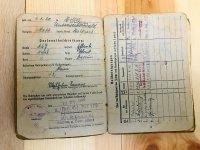 3.jpg291.9 KB · Views: 32
3.jpg291.9 KB · Views: 32 -
 4.jpg249.8 KB · Views: 27
4.jpg249.8 KB · Views: 27 -
 5.jpg202.2 KB · Views: 27
5.jpg202.2 KB · Views: 27 -
 6.jpg304.1 KB · Views: 28
6.jpg304.1 KB · Views: 28 -
 7.jpg254 KB · Views: 33
7.jpg254 KB · Views: 33 -
 8.jpg231.1 KB · Views: 27
8.jpg231.1 KB · Views: 27 -
 9.jpg219.7 KB · Views: 29
9.jpg219.7 KB · Views: 29 -
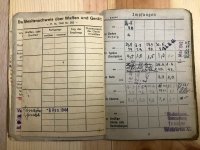 10.jpg240.5 KB · Views: 27
10.jpg240.5 KB · Views: 27 -
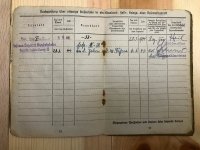 11.jpg288.3 KB · Views: 25
11.jpg288.3 KB · Views: 25 -
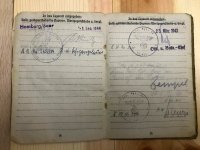 12.jpg224.1 KB · Views: 24
12.jpg224.1 KB · Views: 24 -
 13.jpg219.1 KB · Views: 24
13.jpg219.1 KB · Views: 24 -
 14.jpg238.4 KB · Views: 25
14.jpg238.4 KB · Views: 25 -
 15.jpg243.7 KB · Views: 22
15.jpg243.7 KB · Views: 22 -
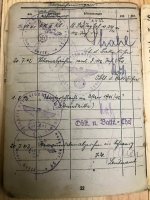 16.jpg236.5 KB · Views: 23
16.jpg236.5 KB · Views: 23 -
 17.jpg179.2 KB · Views: 23
17.jpg179.2 KB · Views: 23 -
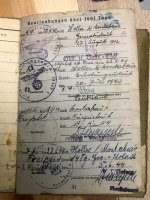 18.jpg217.8 KB · Views: 27
18.jpg217.8 KB · Views: 27 -
 19.jpg174.4 KB · Views: 26
19.jpg174.4 KB · Views: 26







